Washita Battlefield National Historic Site
Washita Battlefield National Historic Site
Washita Battlefield National Historic Site protects and interprets the site of the Southern Cheyenne village of Peace Chief Black Kettle that was attacked by the 7th U.S. Cavalry under Lt. Col. George A. Custer just before dawn on November 27, 1868. The controversial strike was hailed at the time by the military and many civilians as a significant victory aimed at reducing Indian raids on frontier settlements. Washita remains controversial because many Indians and whites labeled Custer's attack a massacre. Black Kettle is still honored as a prominent leader who never ceased striving for peace even though it cost him his life.
Location
Directions
From I-40 take exit 20 (Sayre) and travel north on US-283 to Cheyenne. Park Headquarters and The Black Kettle Museum are located near the intersection of US-283 and SH-47. The site is 2 miles west of Cheyenne on SH-47A. Follow the National Historic Site signs to site.
Regions
Maps
- 35.617527, -99.700325
- OpenStreetMap
- Google Maps
- Bing Maps
- Apple Maps
- MapQuest
Pictures
Notes
Battle of Washita River
Information from Wikipedia, the free encyclopedia
The Battle of Washita occurred on November 27, 1868 when George Armstrong Custer’s 7th U.S. Cavalry attacked Black Kettle’s Cheyenne village on the Washita River (near present day Cheyenne, Oklahoma). The evidence used to depict the Battle of Washita is derived from Custer’s own account of the battle while the evidence used in describing the events prior to the battle revolves heavily around General Phillip Sheridan’s annual report of 1868.
The causes
The historical accounts which depict the events leading to the Battle of Washita make mention of two noteworthy items. First, was that there was a break down in communication between the Indians and their agent. Philip Sheridan describes this in his 1868 annual report writing, "Troops were sent twice or three times to Cobb, on requisition of the agent, who appeared to be constantly in trouble, either through his own fault or that of the Indians—most probably the latter, as they told me they did not like him...." The second item involves the raiding of Kansas and Colorado which resulted in the loss of American lives and property. Sheridan lists seventy-five citizens killed in his annual report and describes the loss of property as five thousand head of cattle and "... settlements ... driven in and ranches abandoned, making the damage done to all interests very large." To deal with the delinquent Indians Sheridan, with Custer in his command, devised a plan to destroy the Indian’s winter provisions subsequently forcing them onto the reservations.
Modern accounts also indicate that a breakdown in Indian to agent communication occurred. Richard White identifies the specific disagreement as "... the Americans refused to issue the Cheyennes arms promised earlier. Although Indian agents eventually relented ... it was too late to prevent trouble." The trouble White is alluding to was the killing and raiding committed by a Cheyenne war party in southern Kansas. The war party killed fifteen men and raped five women. At this point the similarities between the modern and historical accounts end. The modern account continues the story by describing how Black Kettle reaches Washita. After the raiding of Kansas began, a free fire zone was established and all non-hostile Indians were ordered to move south to the Washita River. Washita was a desirable wintering location for several reasons. Among these was that along the north bank of the river there were tall bluffs which served as a natural wind block while abundant grasslands covered the southern portion of the river offering good feed for Indian horses. Richard White describes Black Kettle’s arrival to the Washita River valley thus: "Black Kettle, the survivor of Sand Creek, journeyed to the Washita, seeking to include his band among the friendlies. But since many of his young men were raiding, the Americans rebuffed him. He made camp at the Washita anyway..."
Further complications surfaced upon Black Kettle’s arrival. The other Indians encamped along the Washita felt Black Kettle was unlucky after his misfortune at Sand Creek and made his group camp at the western end of the winter encampments over two miles from the other camp.
The battle
On November 27, 1868 Custer’s Osage Nation scouts located the trail of an Indian war party. Custer followed this trail all day without break until nightfall. Upon nightfall there was a short period of rest until there was sufficient moonlight to continue. Eventually they reached Black Kettle’s village. Custer divided his force into four parts each moving into position so that at first daylight they may all simultaneously converge on the village. At daybreak the four columns attacked. The Indian warriors quickly left their lodges to take cover behind trees and in deep ravines. Custer was able to take control of the village quickly but it took longer to quell all remaining resistance.
If Custer was lucky for surviving the battle, Black Kettle must have been unlucky for he didn’t survive; in fact one of Custer’s Osage scouts left Washita with Black Kettle’s scalp. Following the capture of Black Kettle’s village Custer was soon to find himself in a precarious position.
As the fighting was beginning to subside Custer began to notice large groups of mounted Indians gathering on nearby hilltops. He quickly learned that Black Kettle’s village was only one of the many Indian villages encamped along the river. Fearing an attack he ordered some of his men to take defensive positions while the others were to gather the Indian belongings and horses. What the Americans did not want or could not carry, they destroyed. Custer feared the outlying Indians would find and attack his supply train so near nightfall he began marching toward the other Indian encampments. Seeing that Custer was approaching their villages the surrounding Indians retreated to protect their families from a fate similar to that of Black Kettle’s village. At this point Custer turns around and begins heading back towards his supply train which he eventually reaches. Thus the Battle of Washita ends.
The accounts of the event
Historical accounts make no mention Black Kettle’s request to camp as a friendly tribe or of the free fire zone enacted in Kansas. In this sense the historical documents seem bias toward the Americans. While the historical documents tend to lean towards the American perspective, modern accounts, in describing the events prior to the battle, seem to remain largely objective and neutral.
The modern accounts of the Battle of Washita, and Richard White’s It’s Your Misfortune and None of My Own, tend to lose their neutrality while describing the battle. Richard White illustrates this trend by describing the battle as "Once more American soldiers attacked a Cheyenne village that consisted largely of women and children.". This is further demonstrated when Custer was described as being lucky to survive the battle. Since Custer’s own account of the battle contained the most information regarding the battle itself, the battle is described from his viewpoint. But there are contrasts between the historical and modern accounts.
The greatest difference between the modern and historical accounts is whether Washita was a battle or a massacre. Modern historians tend to lean towards the massacre side as White illustrates by writing "... American soldiers attacked, and ... slaughtered a camp ... of women and children." White, however, provides no evidence to support this claim. Custer certainly does not consider Washita a massacre. He does mention that some women did take weapons and were subsequently killed. This seems logical since it was four years earlier when Chivington stormed through Sand Creek slaughtering many men and women. With this thought in their minds, women would certainly not feel comfortable with American soldiers in their midst. Custer did leave Washita with women and children prisoners; he did not simply kill every Indian in the village though he admittedly killed women.
Another area of comparison between modern and historic accounts is the story of Major Elliot. Elliot, who died in the battle, commanded one of the four columns that attacked the village. Neither the modern nor historic account of the battle can precisely describe the circumstances of his death. One version is that he ventured too far east and encountered some of other tribes of Indians where he was killed. In the historic accounts Elliot’s story is similar which Custer briefly describes in his autobiography. Apparently one of the Custer’s scouts saw Elliot chase some of the Cheyenne Indians west that were escaping from Black Kettle’s village. Different amongst the two accounts of the battle is whether Custer searched for Elliot after his disappearance. Custer says he did. "Parties were sent in the direction indicated by the scout, he accompanying them; but after a search extending nearly two miles all the parties returned, reporting their efforts to discover some trace of Elliot and his men fruitless."
The last common point of interest was the loss of the cavalry’s great coats. Custer had his men set their coats aside prior to the battle and that the Indians were able to capture these. Custer admits to this in his account. He had ordered the men to take of their coats so they would have greater maneuverability. Not mentioned in the modern accounts was that Custer’s men also had left their rations. Custer left a small guard with the coats and rations but the Indian forces were too superior and the guard retreated thus the great coats and rations were captured.
From both the historic and modern accounts we can determine that the cause of the Battle of Washita was a break down in Indian to agent communications which resulted in Indian raiding. Regarding the battle itself, neither the historical nor modern account can prove or disprove the battle was a slaughter. As for Major Elliot both the modern and historic accounts agree on the likely cause of his disappearance but disagree on whether Custer attempted to search for him. Lastly was a minor detail regarding the loss of Custer’s men’s grey coats and rations. Both versions mention this and describe the event similarly. In conclusion the historic accounts of the battle seem legitimate but as Custer was the primary source a bias is most likely present. As for the modern accounts, historians commonly approach the battle as a massacre or slaughter taking sides more frequently with the Indians but provide no evidence for their claims of slaughter.
*The above text from Wikipedia is available under the terms of the GNU Free Documentation License
Links:
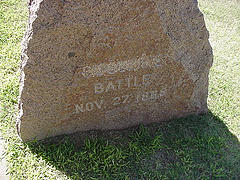
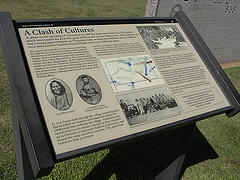
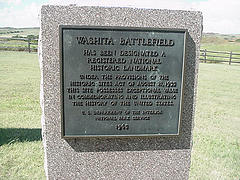
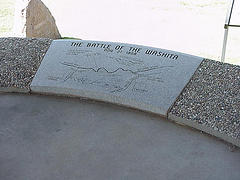
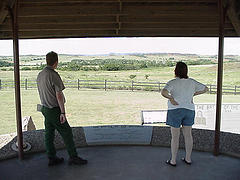
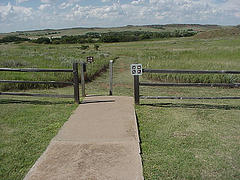
Information from Wikipedia, the free encyclopedia
The Battle of Washita occurred on November 27, 1868 when George Armstrong Custer’s 7th U.S. Cavalry attacked Black Kettle’s Cheyenne village on the Washita River (near present day Cheyenne, Oklahoma). The evidence used to depict the Battle of Washita is derived from Custer’s own account of the battle while the evidence used in describing the events prior to the battle revolves heavily around General Phillip Sheridan’s annual report of 1868.
The causes
The historical accounts which depict the events leading to the Battle of Washita make mention of two noteworthy items. First, was that there was a break down in communication between the Indians and their agent. Philip Sheridan describes this in his 1868 annual report writing, "Troops were sent twice or three times to Cobb, on requisition of the agent, who appeared to be constantly in trouble, either through his own fault or that of the Indians—most probably the latter, as they told me they did not like him...." The second item involves the raiding of Kansas and Colorado which resulted in the loss of American lives and property. Sheridan lists seventy-five citizens killed in his annual report and describes the loss of property as five thousand head of cattle and "... settlements ... driven in and ranches abandoned, making the damage done to all interests very large." To deal with the delinquent Indians Sheridan, with Custer in his command, devised a plan to destroy the Indian’s winter provisions subsequently forcing them onto the reservations.
Modern accounts also indicate that a breakdown in Indian to agent communication occurred. Richard White identifies the specific disagreement as "... the Americans refused to issue the Cheyennes arms promised earlier. Although Indian agents eventually relented ... it was too late to prevent trouble." The trouble White is alluding to was the killing and raiding committed by a Cheyenne war party in southern Kansas. The war party killed fifteen men and raped five women. At this point the similarities between the modern and historical accounts end. The modern account continues the story by describing how Black Kettle reaches Washita. After the raiding of Kansas began, a free fire zone was established and all non-hostile Indians were ordered to move south to the Washita River. Washita was a desirable wintering location for several reasons. Among these was that along the north bank of the river there were tall bluffs which served as a natural wind block while abundant grasslands covered the southern portion of the river offering good feed for Indian horses. Richard White describes Black Kettle’s arrival to the Washita River valley thus: "Black Kettle, the survivor of Sand Creek, journeyed to the Washita, seeking to include his band among the friendlies. But since many of his young men were raiding, the Americans rebuffed him. He made camp at the Washita anyway..."
Further complications surfaced upon Black Kettle’s arrival. The other Indians encamped along the Washita felt Black Kettle was unlucky after his misfortune at Sand Creek and made his group camp at the western end of the winter encampments over two miles from the other camp.
The battle
On November 27, 1868 Custer’s Osage Nation scouts located the trail of an Indian war party. Custer followed this trail all day without break until nightfall. Upon nightfall there was a short period of rest until there was sufficient moonlight to continue. Eventually they reached Black Kettle’s village. Custer divided his force into four parts each moving into position so that at first daylight they may all simultaneously converge on the village. At daybreak the four columns attacked. The Indian warriors quickly left their lodges to take cover behind trees and in deep ravines. Custer was able to take control of the village quickly but it took longer to quell all remaining resistance.
If Custer was lucky for surviving the battle, Black Kettle must have been unlucky for he didn’t survive; in fact one of Custer’s Osage scouts left Washita with Black Kettle’s scalp. Following the capture of Black Kettle’s village Custer was soon to find himself in a precarious position.
As the fighting was beginning to subside Custer began to notice large groups of mounted Indians gathering on nearby hilltops. He quickly learned that Black Kettle’s village was only one of the many Indian villages encamped along the river. Fearing an attack he ordered some of his men to take defensive positions while the others were to gather the Indian belongings and horses. What the Americans did not want or could not carry, they destroyed. Custer feared the outlying Indians would find and attack his supply train so near nightfall he began marching toward the other Indian encampments. Seeing that Custer was approaching their villages the surrounding Indians retreated to protect their families from a fate similar to that of Black Kettle’s village. At this point Custer turns around and begins heading back towards his supply train which he eventually reaches. Thus the Battle of Washita ends.
The accounts of the event
Historical accounts make no mention Black Kettle’s request to camp as a friendly tribe or of the free fire zone enacted in Kansas. In this sense the historical documents seem bias toward the Americans. While the historical documents tend to lean towards the American perspective, modern accounts, in describing the events prior to the battle, seem to remain largely objective and neutral.
The modern accounts of the Battle of Washita, and Richard White’s It’s Your Misfortune and None of My Own, tend to lose their neutrality while describing the battle. Richard White illustrates this trend by describing the battle as "Once more American soldiers attacked a Cheyenne village that consisted largely of women and children.". This is further demonstrated when Custer was described as being lucky to survive the battle. Since Custer’s own account of the battle contained the most information regarding the battle itself, the battle is described from his viewpoint. But there are contrasts between the historical and modern accounts.
The greatest difference between the modern and historical accounts is whether Washita was a battle or a massacre. Modern historians tend to lean towards the massacre side as White illustrates by writing "... American soldiers attacked, and ... slaughtered a camp ... of women and children." White, however, provides no evidence to support this claim. Custer certainly does not consider Washita a massacre. He does mention that some women did take weapons and were subsequently killed. This seems logical since it was four years earlier when Chivington stormed through Sand Creek slaughtering many men and women. With this thought in their minds, women would certainly not feel comfortable with American soldiers in their midst. Custer did leave Washita with women and children prisoners; he did not simply kill every Indian in the village though he admittedly killed women.
Another area of comparison between modern and historic accounts is the story of Major Elliot. Elliot, who died in the battle, commanded one of the four columns that attacked the village. Neither the modern nor historic account of the battle can precisely describe the circumstances of his death. One version is that he ventured too far east and encountered some of other tribes of Indians where he was killed. In the historic accounts Elliot’s story is similar which Custer briefly describes in his autobiography. Apparently one of the Custer’s scouts saw Elliot chase some of the Cheyenne Indians west that were escaping from Black Kettle’s village. Different amongst the two accounts of the battle is whether Custer searched for Elliot after his disappearance. Custer says he did. "Parties were sent in the direction indicated by the scout, he accompanying them; but after a search extending nearly two miles all the parties returned, reporting their efforts to discover some trace of Elliot and his men fruitless."
The last common point of interest was the loss of the cavalry’s great coats. Custer had his men set their coats aside prior to the battle and that the Indians were able to capture these. Custer admits to this in his account. He had ordered the men to take of their coats so they would have greater maneuverability. Not mentioned in the modern accounts was that Custer’s men also had left their rations. Custer left a small guard with the coats and rations but the Indian forces were too superior and the guard retreated thus the great coats and rations were captured.
From both the historic and modern accounts we can determine that the cause of the Battle of Washita was a break down in Indian to agent communications which resulted in Indian raiding. Regarding the battle itself, neither the historical nor modern account can prove or disprove the battle was a slaughter. As for Major Elliot both the modern and historic accounts agree on the likely cause of his disappearance but disagree on whether Custer attempted to search for him. Lastly was a minor detail regarding the loss of Custer’s men’s grey coats and rations. Both versions mention this and describe the event similarly. In conclusion the historic accounts of the battle seem legitimate but as Custer was the primary source a bias is most likely present. As for the modern accounts, historians commonly approach the battle as a massacre or slaughter taking sides more frequently with the Indians but provide no evidence for their claims of slaughter.
*The above text from Wikipedia is available under the terms of the GNU Free Documentation License
Links:
- Washita Battlefield National Historic Site (National Park Service)
- Answers.com Black Kettle
- Answers.com: George Armstrong Custer
- Answers.com: Philip Sheridan
- Cheyenne, OK Chamber of Commerce







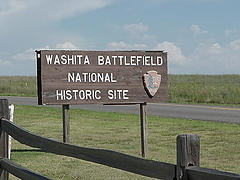
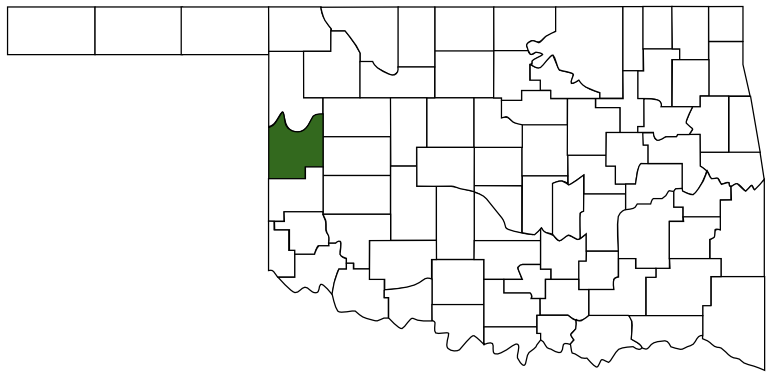 Roger Mills County
Roger Mills County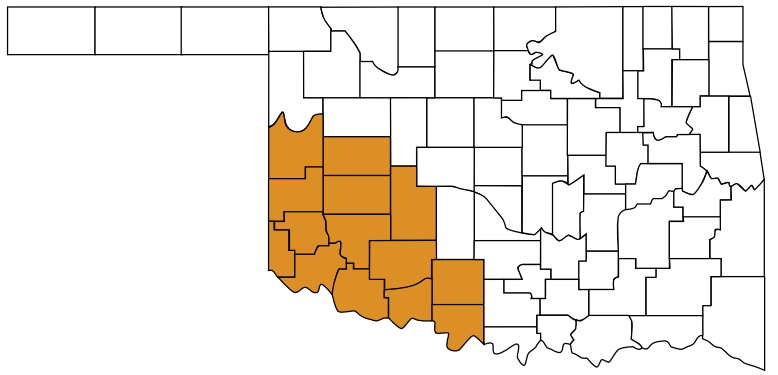 Great Plains Country
Great Plains Country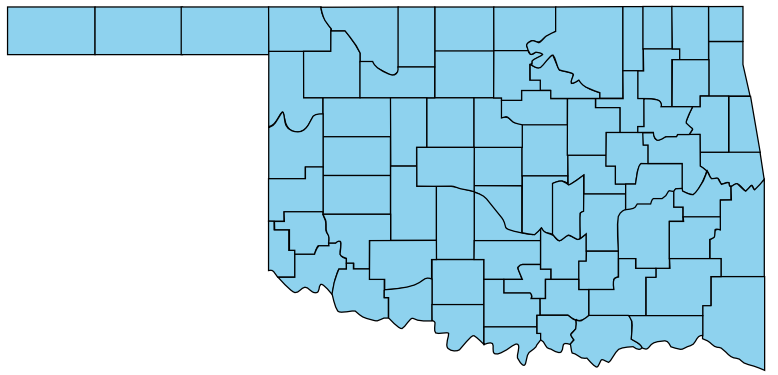 Oklahoma
Oklahoma